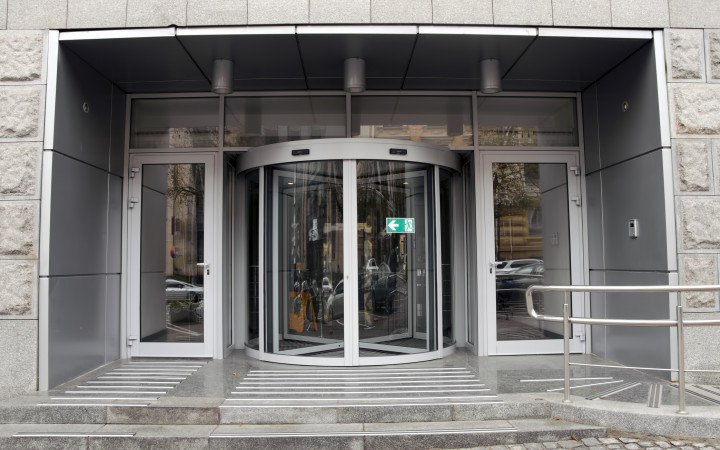Today’s Wonder of the Day was inspired by rebekah. rebekah Wonders, “who invented the revolving door” Thanks for WONDERing with us, rebekah!
The wheels on the bus aren’t the only things that go around and around! The doors to some buildings do the same thing. What are we talking about? Revolving doors, of course!
Chances are you’ve been through a few revolving doors in your lifetime. They’re very common in large buildings and other places with a lot of foot traffic. You may have seen them at an office building or a shopping mall.
We’ll even bet that the first time you used a revolving door you went around a couple of times before passing into or out of the building. Didn’t you? Admit it!
And why not? Revolving doors are different and kind of fun. Would you like to have a revolving door in your house? What about your school?
Revolving doors consist of three or four doors called wings or leaves. They are spaced an equal distance from each other around a center shaft. They rotate in a circle inside of a cylinder. The cylinder can be small, with just enough space for one person between wings, or it can be large enough to allow several people or even strollers or luggage racks to fit between wings.
The revolving door was invented in 1888. Its creator was Theophilus van Kannel from Philadelphia, Pennsylvania. An old urban legend holds that revolving doors were invented to prevent horses from entering buildings. Although that’s funny, it’s not true.
Revolving doors were invented because they have many advantages over traditional hinged doors. For example, revolving doors are more energy efficient than regular doors. When you open a regular door, a large amount of air can escape. Revolving doors limit the amount of air that escapes as the wings rotate through the cylinder. In this way, drafts are reduced. That minimizes heating and cooling costs.
Revolving doors also allow more people to enter and exit buildings faster. Using a revolving door, people can enter and exit a building at the same time. Regular doors force one person to wait while the other passes through.
Architects like revolving doors because they enhance the entrances of buildings. They reduce the amount of street noise heard by those inside. They also eliminate the annoying sound of slamming doors.
Have you ever used a revolving door? If you could have one in your home, would you? They certainly have many benefits. What other interesting doors would you like to know about?
Standards: CCRA.L.3, CCRA.L.6, CCRA.R.1, CCRA.R.2, CCRA.R.4, CCRA.R.10, CCRA.SL.1




